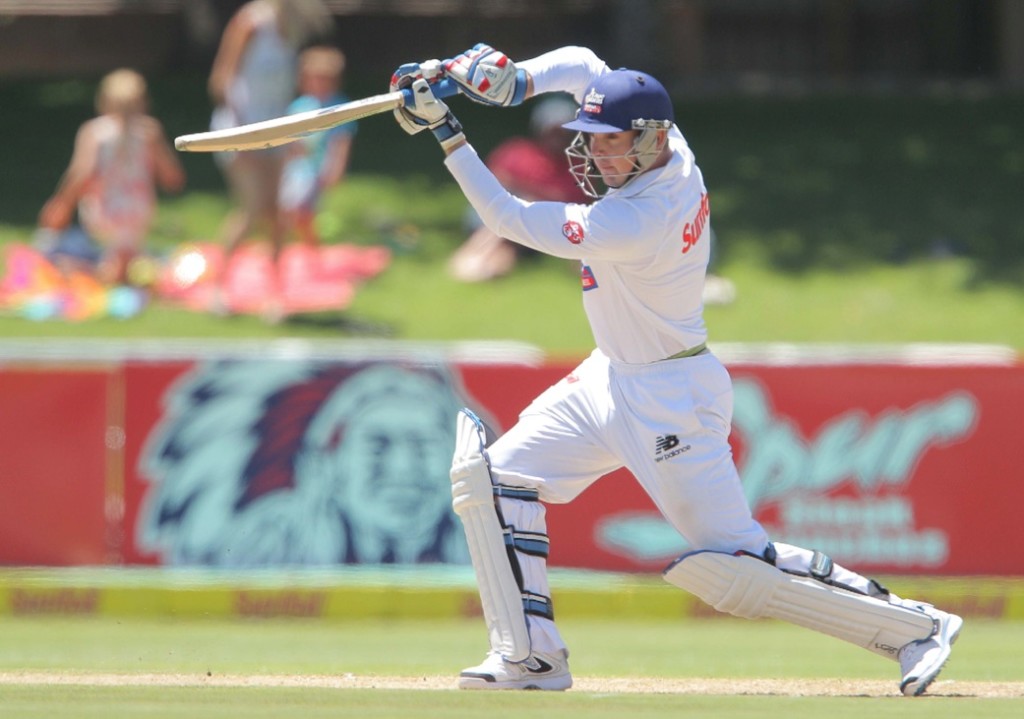New Proteas Test squad member Stiaan van Zyl was confident that if he kept scoring runs, ‘the door couldn’t be closed forever’.
Here he talks to SACricket magazine in an interview conducted earlier this year.
How did you get started with cricket?
I went to Boland Agricultural High School and played every sport available. I dabbled in a bit of tennis, did horse riding, gymkhana and rugby, as well as cricket. I didn’t ever set my goals on playing cricket professionally. I was actually a bowler back then, but when I realised I could bat a bit I concentrated on that and it just went from there.
Did you decide to give professional cricket a go immediately after school?
I first went to the UK to play club cricket the year after I finished school. I knew that if cricket didn’t work for me over there, I would return to South Africa and study. My big dream outside cricket was to be a commercial pilot. Maybe when I’m done playing, I’ll still do that. But the year in the UK worked out, and I came back and started playing for Boland.
How did you get your opportunity with the Cobras?
Shukri Conrad, who was the Cobras coach at the time, played a massive role and he is the one who gave me the chance to play first-class cricket. A group of us from the Boland team went on a pre-season tour to Potchefstroom and then Shukri told me I was going to play the first Cobras game that season. I had done well on the tour, and Shukri said he was impressed with my performances. I was 19 and playing against a side with guys like Pierre de Bruyn and Pierre Joubert – experienced first-class players who were known for their sledging. Because I was so young, and the new guy, a few harsh words came my way, but despite that I scored 74 and 67, and that’s when I realised I could play at this level. It was something of a baptism of fire, but I managed to get through it. I’ve been enjoying the journey ever since.
You’ve been fortunate to be surrounded by senior players and international stars at the Cobras. How much have you learned from them?
The things I’ve picked up have been more from watching the guys than talking to them. I think a lot of top cricketers don’t want to talk about the game at length when they aren’t playing, so that’s why I prefer to observe them. One of the main things I’ve noticed is that they all have an incredible work ethic and I’ve tried to apply that to my game.
You were first picked for the SA A side in 2010, to play Bangladesh, and since then you’ve been part of squads that have played against Sri Lanka A, India A and Australia A. How has that helped develop your game?
Being part of A squads is an indication you could be next in line for national honours. It’s also a great experience as you get to play with mates from around the country, so there’s quite a special vibe without losing professionalism. You also get to play against the next best from other Test countries, so it’s almost like a Test, just at a slightly lower level; and if you do play Test cricket, you may end up playing those guys again, so it’s good practice for the big stage. I’ve been using the SA A games to work on my approach against spinners because in the past, I used to just block them out and take the odd single, so my scoring rate would drop. Now I’ve learned how to take them on a little and it works in my favour. If I score off the spinners, the captain may bring the seamers back on, which suits me better anyway.
There’s a perception you’re more of a long-form player. How do you feel about your performances in the shorter formats?
I want to play all formats of the game and I’ve realised that if you want to be successful in the shorter game, you’ve got to make things happen and take more risks. Even though Test cricket is my ultimate goal, I think there’s a role for me in ODIs and T20s, too, because you always need someone who will bat through the innings as an anchor. If I do that in a T20, I may only have to have a strike rate of 120, as opposed to going above 150, like some of the guys. That quick scoring rate doesn’t come naturally to me, but I’m confident I have the experience to adjust my game as needed.
Have you been tempted to go overseas again to play cricket and earn pounds?
I have, but overseas clubs want us for a full six months and with the SA A programme, I can only really give two months or so. If there was a club that would be happy with that, I’d love to go but for now it’s more important to stay here and be part of all the High Performance Centre work. I’m fully committed to working hard to achieve my dream of playing for the Proteas.
When you heard Jacques Kallis had retired from Test cricket, did you think you may get a look-in?
The thought may have crossed my mind, but I knew the selectors would have had to decide if they wanted a batsman or an all-rounder and I knew there was quite a long line of guys ahead of me. If I keep scoring runs, they can’t keep the door closed forever, so I’m not disheartened.
Which players do you see as your main competition for a place in the Proteas side?
Everyone is talking about Quinton de Kock; he scored a fifty in the Australia Test series warm-up game and he played in the second Test in PE. But Rilee Rossouw and Reeza Hendricks have also been knocking on the door for a few years. It’s all about timing. When the national side needs a batsman, whoever is in form will probably get the next call-up. I started this season with two big scores up front, so I have to just keep that up and continue doing well for the team. I enjoy being part of a Cobras side that’s winning, and the more we win, the more the players will get noticed.
This article appears in the March-May issue of SACricket magazine.







